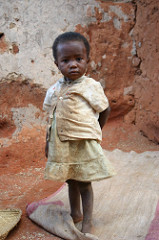
While formerly parched California received so much rain in the winter of 2016-17 that towns flooded, people in an island country off the coast of Southern Africa were hoping and praying for rainy weather. The place, Madagascar.
In December 2016 Capital Public Radio (NPR) published an article, Drought-Stricken Southern Madagascar Teeters On The Edge Of Famine. It said,
“A three-year drought, exacerbated by this year’s El Niño, has caused harvests to continue to fail. And people are left with no money and almost nothing to eat.”
Also, according to the Famine Early Warning Network System (FEWS) update for the week covering February 10-17, 2017, many consecutive weeks of poor rainfall have continued to cause “abnormal dryness, drought, and severe drought conditions in eastern and northern Madagascar.”
It added,
“An increase in rain has begun to improve conditions for some central parts of the country”
But that did little to help conditions overall. Insufficient rain in a good portion of the country has meant a further rise in food prices and especially in southern Madagascar.
 The World Food Programme (WFP) site said Madagascar is one of ten countries considered most vulnerable to natural disasters. It reported that,
The World Food Programme (WFP) site said Madagascar is one of ten countries considered most vulnerable to natural disasters. It reported that,
“A quarter of the population lives in areas highly prone to cyclones, floods or drought. Climate change and environmental degradation exacerbate these risks while the increasing fragility of the ecosystem intensifies vulnerability to shocks and food insecurity. Deforestation has become a major concern: 85 percent of Madagascar’s rainforest has been lost to logging, charcoal-making and slash-and-burn agriculture.
WFP indicated recent political instability also made an already bad situation worse.
Photo credits: Desert by bDom, License: CC BY 2.0; Child by Martha de Jong-Lantink, License: CC BY-NC-ND 2.0